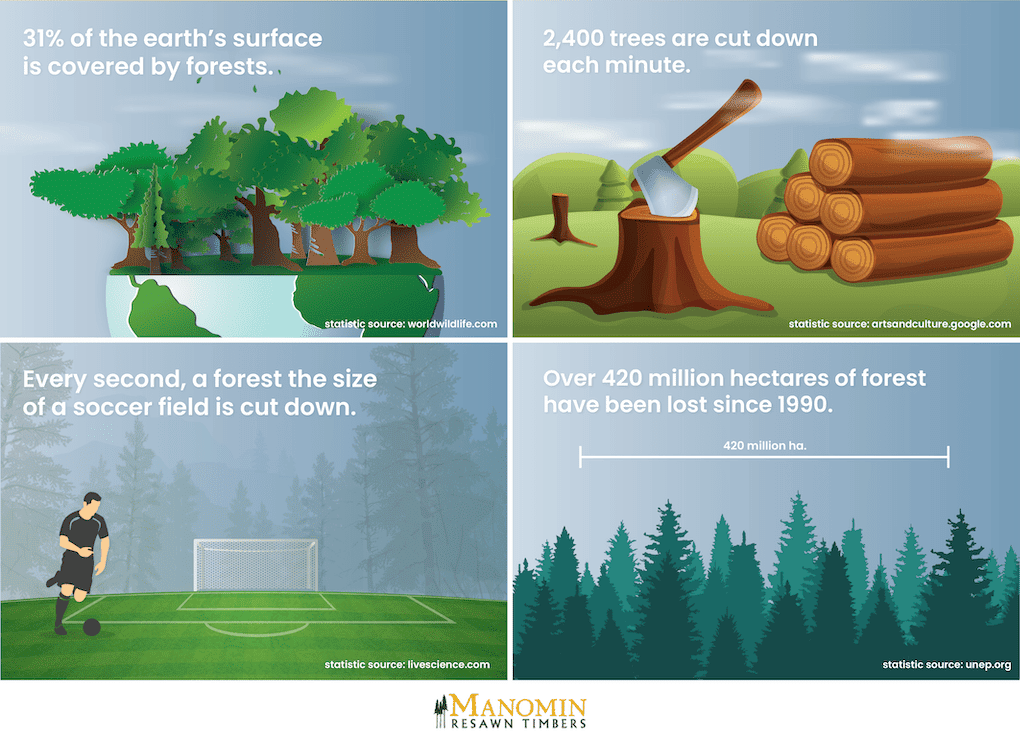26 Alarming Deforestation Statistics & What You Can Do To Provide Change
Deforestation is a real problem and not just because of the increase in carbon dioxide and pollution that we’re faced with year after year. Fewer trees and forests also mean less habitat for animals and birds alike. Insects and other smaller animals in decline might mean fewer mosquito bites for now, but if we aren’t intentional to protect our forests soon plants and animals

By mrtimbers | Updated February 23, 2022
Deforestation is a real problem and not just because of the increase in carbon dioxide and pollution that we're faced with year after year.
Fewer trees and forests also mean less habitat for animals and birds alike. Insects and other smaller animals in decline might mean fewer mosquito bites for now, but if we aren’t intentional to protect our forests soon plants and animals will begin to become obsolete altogether..
As a Reclaimed Wood Dealer located in Minnesota, we've made it our mission to save forests by reclaiming wood and providing a sustainable product to our customers across the country. It's vital that everyone is informed on this important topic and knows how to help. Hopefully, today's blog post can help with that!
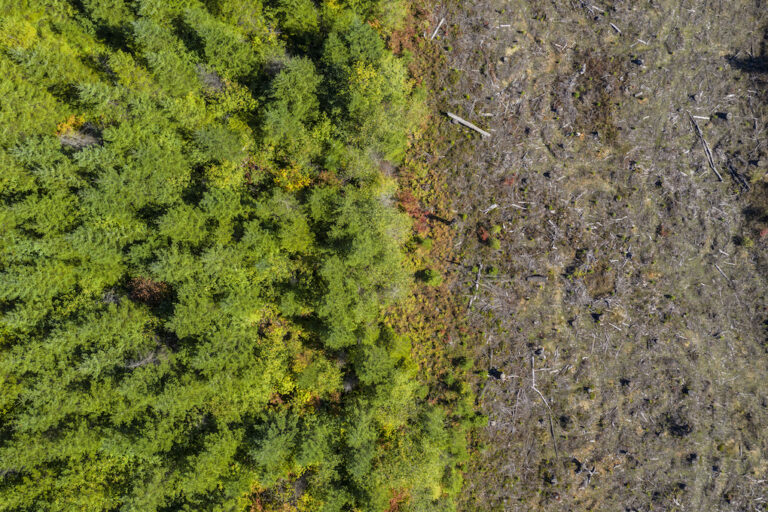
What is Deforestation?
If you're wondering what all is included in "deforestation," we have an answer for you. Here's a definition from National Geographic, "Deforestation is the purposeful clearing of forested land. Throughout history and into modern times, forests have been razed to make space for agriculture and animal grazing, and to obtain wood for fuel, manufacturing, and construction."
Today some of the most common places that experience extreme deforestation are tropical rainforests. These places are home to some of the world's largest forests and thus a great place to settle, farm, and clear land. Over time this can cause extreme forest degradation and lead to tropical deforestation that later causes plant and animal species to become extinct and changes our global atmosphere and climate.
https://youtu.be/vJnnrpSDWPI
Leading Causes of Global Deforestation
While we may have been taught as kids that waisted paper can be one of the leading causes of deforestation, that's actually not the case. Paper and wood products only add up to 10% of deforestation.
The other 90% of deforestation comes from cattle ranchers, soybean farmers, and palm oil plantations.
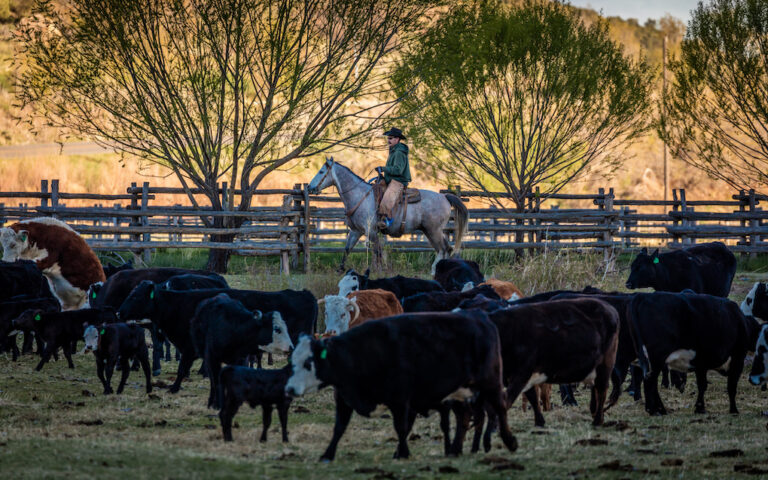
Sometimes the only way we can know what to do about deforestation is to know more so that we can be aware and take action when opportunities arise.
Shocking Global Deforestation Statistics
- 31% of the earth’s surface is covered by forests. (WWF)
- 2,400 trees are cut down each minute. (Google Arts & Culture)
- Every second, a forest the size of a soccer field is cut down. (Live Science)
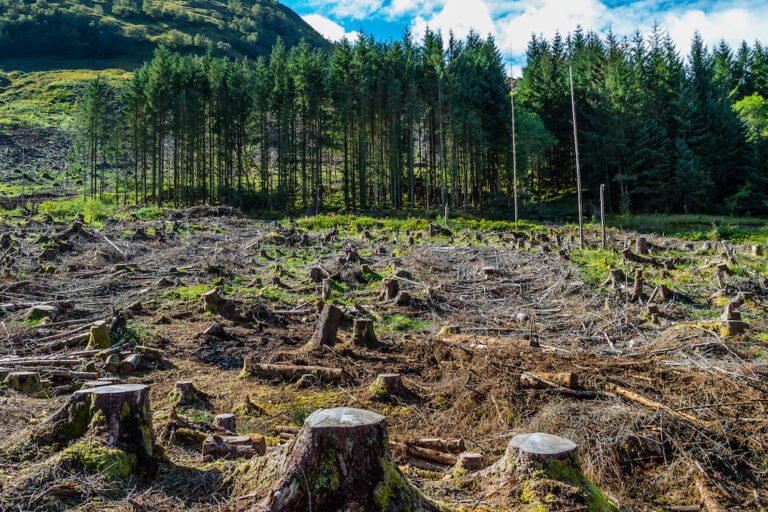 Over 420 million hectares of forest have been lost since 1990. (OTP)
Over 420 million hectares of forest have been lost since 1990. (OTP)- Between 1990-2010 an average of 15.5 million hectares of forest were destroyed every year. (UN News)
- Between 2010-2015 12 million hectares of forest were destroyed every year giving a 22.58% decline for 2010-2015 compared to 1990-2010. (UN News)
- Between 2015-2020 10 million hectares of forest were destroyed every year giving a 35.48% decline for 2015-2020 compared to 1990-2010 and 16.67% decline compared to 2010-2015. (UN News)
- Tropical deforestation contributes about 20% of annual global greenhouse gases (GHG) emissions. (Environmental Defense Fund)
- Prior to 2019, greenhouse gas emission from tropical forest degradation was seriously underestimated. (The Guardian)
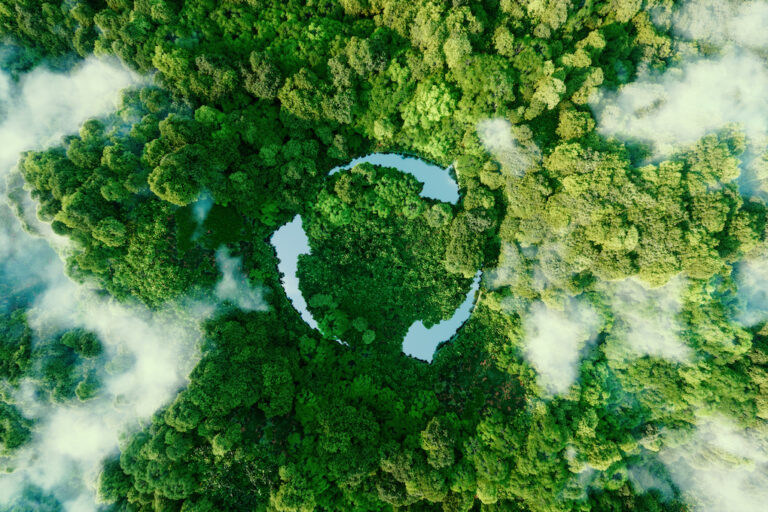
- 14,800 square miles of forest are lost every year. This is roughly the same size as Switzerland. (The World Counts)
- In 2019, approximately 9 million acres of rainforests were destroyed. (Bloomberg)
- Deforestation causes approximately $2 trillion to $4.5 trillion in lost biodiversity each year. (The Balance)
- 4.2% of the world’s tree cover loss was between 1990 and 2020. (FAO)
- By 2030, there may be only 10% of the world’s rainforests left. (The World Counts)
- Agriculture is responsible for approximately 80% of tropical forest loss. (Greenpeace USA)
- 12 million hectares of tropical tree cover was lost in 2020. (World Resources Institute)
- 31% of modern diseases are a result of deforestation. (FAO)
https://youtu.be/mobzZtAafus
- 137 different species of plants, animals, and birds are lost every single day due to global forest loss. (RainTree)
- 50,000 species are lost each year as a result of deforestation. (RainTree)
- 25% of Western drugs and pharmaceuticals come from rainforest ingredients. (RainTree)
- 25% of all cancer-fighting drugs come from the rainforest. (RainTree)
Deforestation Statistics for the United States
The United States and a lot of North America as a whole have huge spaces of forests that cover much of the landmass. While some of these forests are protected. Many of them are used for logging. Here are a few facts that you might find interesting about the United States.
- US cities are losing 36 million trees annually. (The Guardian)
- Since the 1600s, the US has destroyed 75% of its virgin forests. (LoveToKnow)
- The US lost 973,000 square miles of forest between 2001 to 2019. (Global Forest Watch)
- Florida, Alaska, Alabama, Georgia, and Mississippi suffered the most deforestation loss. (Global Forest Watch)
https://youtu.be/Ic-J6hcSKa8
If you want to choose a sustainable option for wood products throughout your home, consider reclaimed wood. At Manomin we've found that reclaimed wood has more benefits than virgin lumber and provides homeowners with something that's completely unique to them and their home.
You can visit our showroom to see some of the products we offer or request a quote today for any specific item.
End Grain Wood Tile Flooring: An Excellent Pattern For Strength and Beauty
If you are searching for a truly unique option for your hardwood floors, end grain wood tile brings an extra level of detail and history that is unmatched by any other form we offer. At Manomin Resawn Timbers, we believe that the best […]
5 Box Beam Ceiling Features: Beauty and Craft Above It All
A box beam ceiling is a visually striking way to bring warmth, structure, and architectural interest into a space. Rather than being carved from a single timber, box beams are hollow, built from carefully joined planks to create the illusion of a solid […]
